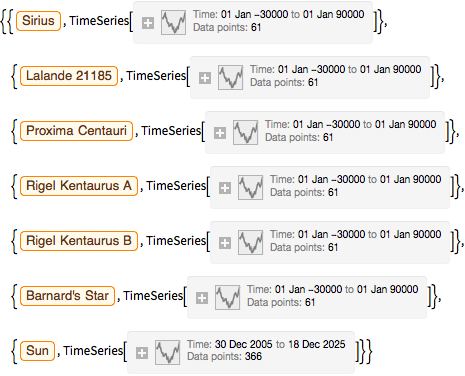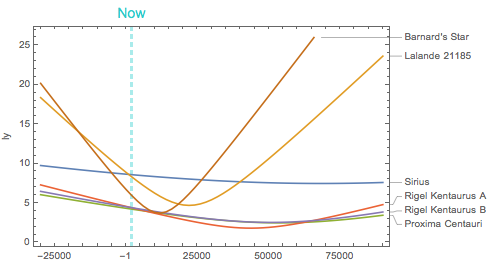Proper Motion of Stars
StarData provides easy access to numerous properties of thousands of stars. One such property is a time series of distance from Earth, which tracks the proper motion of a star. The definition of proper motion can be provided with WikipediaData.
In[1]:=
TextSentences[WikipediaData["Proper_motion", "ArticlePlaintext"]][[1]]Out[1]=

The 10 nearest stars are defined as an EntityClass.
In[2]:=
close10 = EntityClass["Star", "StarNearest10"]Out[2]=
The list of the stars.
In[3]:=
close10["Entity"]Out[3]=

Retrieve the time series of proper motion and remove the stars with missing data.
In[4]:=
res = DeleteMissing[
EntityClass["Star", "StarNearest10"][{"Entity",
"StarDistanceTimeSeries"}], 1, 2]Out[4]=

Since the distance between the Earth and the Sun is very small when compared to the other stars, the time series for the Sun does not reflect its proper motion and will be excluded. Most of the other stars remain in almost constant distance to the Earth and the Sun, but there are two that will get closer and then move away.
show complete Wolfram Language input
Out[5]=

























